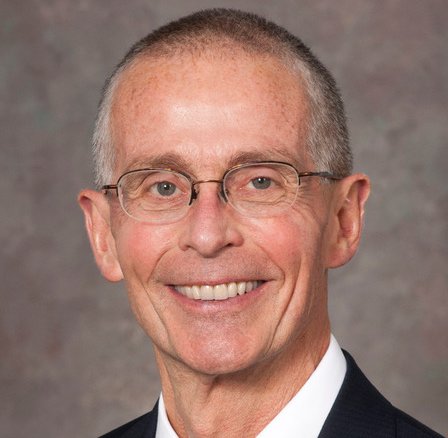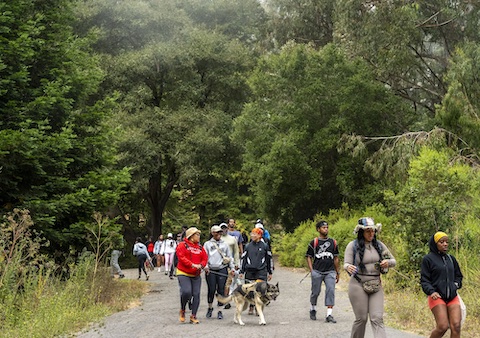
11 Jul ‘It’s Everybody’s Problem’: Doctor Says Gun Violence Needs ‘Public Health Approach’

Dr. Garen Wintemute leads the Firearm Violence Research Center — the first state-funded center of its kind — at UC Davis. (Courtesy of Garen Wintemute)
Interview, Dr. Joseph Marshall
Editor’s note: In a landmark move, the U.S. surgeon general declared gun violence a public health crisis last month, urging action on policy, research and mental health resources for victims of gun violence to address the escalating epidemic.
Dr. Garen Wintemute at UC Davis is an emergency medicine physician and director of the Violence Prevention Research Program and its Firearm Violence Research Center. He discussed the surgeon general’s report with Dr. Joseph Marshall and the Street Soldiers Radio team June 30 on 106.1 KMEL. The interview has been lightly edited for clarity.
Dr. Joseph Marshall: We know there’s been a violence problem, but now the surgeon general is specifically labeling this a gun-violence problem. Not a knife-violence problem or an automobile-violence problem; it’s a gun-violence problem. What is the significance of this report, specifically saying gun violence is a public health problem?
Dr. Garen Wintemute: The smartest thing that was ever said about violence being a public health problem came from the head of the CDC, Dr. David Satcher, 30 years ago, when he said to the New York Times: If violence isn’t a health problem, then why are all these people dying from it? It’s just that simple. What matters is that the highest-ranking physician in the country has said what we’ve all known and lived. But it matters when the person at the top says that this is a problem of a specific type, and why a public health problem. Why that matters is we have lots of experience in dealing with public health problems. And a lot of that experience is transferable to gun violence.
JM: Unfortunately, it happens so often that how many tears can you shed, right? Would you say that people are becoming numb? Is that what you’ve seen?
GW: That is not what I’ve seen. People haven’t given up. It’s not that people don’t care. People aren’t sure what to do. They don’t know what works. What they see is their friends, their neighbors, their loved ones, dying or being injured around them, whether by homicide or suicide. They know it touches them in their neighborhoods. A lot of people think it’s not so much my problem, because they think about homicide, but if you put it all together, more than half of adults in the United States have a direct personal experience with gun violence. It’s everybody’s problem. To come back to this report, what this does is acknowledge that statement and frame an agenda for things to do.
JM: How much does it take for something to be named a public health crisis? It seems obvious gun violence is killing folks like crazy, so why does it take so long?
GW: Researchers were publishing articles calling gun violence a public health problem in the 1970s. It has taken us 50 years for the surgeon general to call firearm violence a public health problem. I certainly don’t blame our current surgeon general. He’s the guy who did it. But for 50 years, we haven’t, at the policy level, been willing to acknowledge the obvious. Because once you acknowledge the obvious, you have to do something about it, or, one hopes you’ll do something about it, which, again, is what the surgeon general’s report is trying to drum up some impetus for. Without question, politics has played a role in this not being acknowledged sooner.
JM: When you say certain steps can be taken because this is now declared a public health problem, you intimated that we know how to deal with public health problem, therefore we should put some of these steps into place. What possibly could some of those things be?
GW: Let’s start with firearms have become the leading cause of death for children and adults. That has happened for two reasons. One is that the rate of death from gun violence among children and youth has been going up for a decade, and that’s a tragedy. But the main reason is that what was the No. 1 cause of death, motor vehicle death, has plummeted. That happened in large part because 60 years ago, we took on motor vehicle death as a public health problem, and we implemented a bunch of strategies. Some of them worked great; some of them didn’t work so well. We had to evaluate to find that out. But 60 years later, motor vehicle deaths are a mere fraction of what they were. We deliberately chose, until now, not to take that approach with firearm violence, and we’re paying the price.
>>>Read: Children Are Dying at Increasing Rates<<<
So as the surgeon general makes the points that I’ve just made and said, so let’s do something about it, one of the things that’s right at the top of the list is community-based violence interrupter programs, or hospital-based violence interrupter programs. A lot of violence is retaliatory. A lot of violence arises from a relatively small number of people in any community. And if you know who those people are, it’s possible to interrupt the cycle of violence. We’ve been seeing success on this front for 30 years now, starting in Boston and then in Chicago and now all over the country.
We know that identifying the people most at risk and doing something to reduce their risk works. It’s true for homicide. It’s true for infectious diseases. It’s true for motor vehicles. It’s the public health approach.
JM: Yes. And maybe a report like this will spur more of that.
Fillmoe Mike: What do you have to say to people that say guns don’t kill people; stupid people with guns kill people?
GW: I’ve heard that statement in one form or another my entire career. Technology makes a difference. Americans are not a uniquely violent society. If you look at our rates of interpersonal violence, and you compare them to other wealthy industrialized countries, we’re right in the middle. Plenty of them are higher than us. If you look at homicide, we are off the charts. The difference is not that we are more violent, it’s that we have unique access to a technology that changes the outcome of violence.
I ask myself, of people who do a lot of violence and who, as you said, see violence as a way to solve problems: How many other ways to solve problems do they know about? What did they learn growing up at home? What did they learn in school? What did they learn from their peers? Did they learn how to negotiate? Did they learn how to walk away with their head held up? Or did they basically learn one way to solve a problem? So as you are doing and as others are doing, part of the approach is to teach people other ways to solve problems.






No Comments